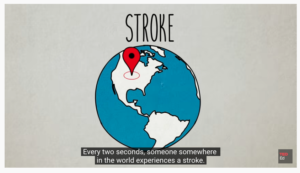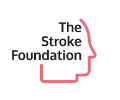As with most diseases, there are elements of risk that we can control or do something about and others that we simply cannot do anything about. Below you’ll find information on inherent risk factors — meaning we all have them — and risk factors you can manage in order to prevent a stroke.
Risk factors we don't control
Men and women over 65 years old are at higher risk of having a stroke, however anyone, of any age, can have a stroke.
Women are at higher risk than men for having a stroke, most of this related to hormonal changes during pregnancy, taking birth control, or treatment for menopause.
African Americans, Native Americans and Hispanics are more likely to have a stroke due to their higher risk for diseases such as high blood pressure, high cholesterol, diabetes and others.
Genetics play a big role in determining whether you are at a higher risk for stroke or not. There are certain genetic mutations that can carry over and put you at a higher risk for a stroke.
1 in 4 people who have a stroke have actually had one before. Those who have had a heart attack previously are also at higher risk.
Risk factors we can control
Eating a balanced diet and exercising regularly are very important when it comes to lowering stroke risk. This combination of diet and regular movement will lower your chances of having high blood pressure, high cholesterol, diabetes, and prevent things such as obesity and heart diseases.
Drinking excessively can have a significant impact on your risk for stroke as it can elevate blood pressure and triglycerides levels, which can lead to fat accumulating in your arteries.
The consumption of tobacco on a regular basis will affect your body’s ability to carry normal levels of oxygen in the blood, damage blood vessels, and raise your blood pressure.
Sedentary lifestyles are now more common than ever. Having an office job means not moving for hours at a time, and even if we do have physically demanding jobs all we want to do when we get home is lay on the couch. Over a long period of time this can make it even more difficult for us to manage other risk factors.
High blood pressure and high cholesterol are two issues that may not appear obvious to us until we do check our blood pressure or do blood testing. Be sure to check your blood pressure every once in a while, and if it’s high speak to your doctor about what options you have to treat it.
Our bodies produce cholesterol naturally, but having an unhealthy diet high in cholesterol can clog our arteries causing a variety of issues. Your doctor will be able to run blood testing to check for cholesterol and give you treatment options.
There are certain heart diseases that cause plaque build-up in your arteries thus restricting the proper flow of oxygenated blood to the brain, while other heart diseases will increase your chance of developing a blood clot which can cause a stroke.
Diabetes is a disease where your body doesn’t produce enough insulin or doesn’t process it as it should, causing sugar to build up in your body.
These conditions are preventable and treatable — it’s important you speak to your doctor about lowering your risk for these conditions and/or treating them if you are currently experiencing them.
To read more about stroke risk, visit www.cdc.gov/stroke/.




